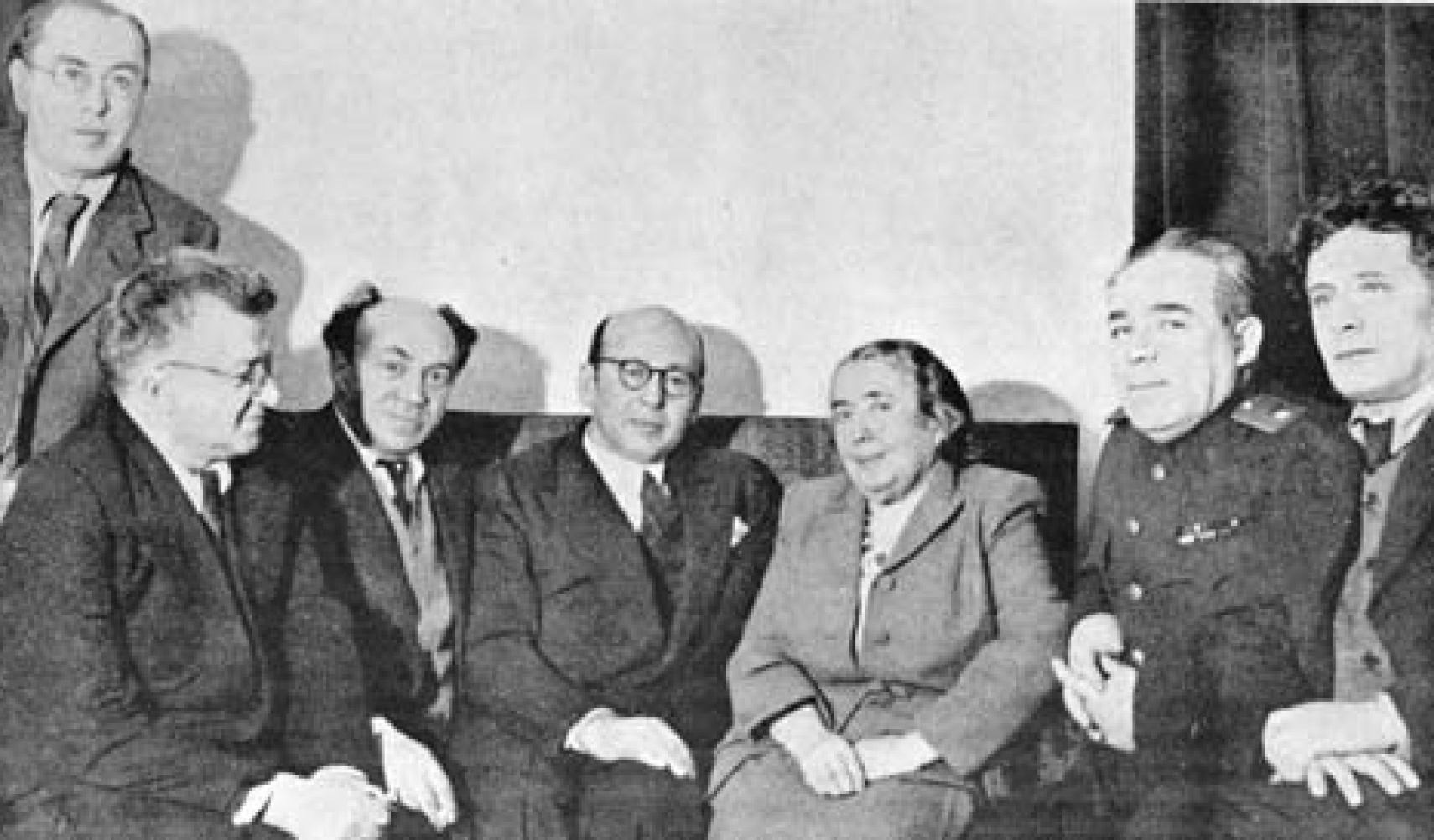
After the war Jac moved away from its original propagandist mission and switched their fundraising efforts to help Jewish soldiers returning from the war. The committee become vocal in lobbing the government against emerging antisemitism in hiring practices, the awarding of medals, and the refusal to investigate crimes with Jewish victims. They also worked with returning veterans who were having difficulty finding work, medical treatment, and their families. Due to these vocal efforts, the committee began to be viewed as dangerous for fostering a sense of national identity in the USSR apart from simply being “Soviet . Almost all of its founding members including Mikhoels were murdered by Stalin after the end of WW2.
During the war, JAC published a newspaper called Eynikayt (Yiddish for unity) which became an important link between Soviet Jews and the JAC and put on radio broadcasts calling on Jewish communities outside of the Soviet Union to make donations to the Red Army and pressure their governments into joining the fight against Nazism. The most successful JAC fundraising occurred in 1943, when Mikhoels lead a delegation to The US, Canada, Britain, Mexico, and Palestine, raising over 30 million dollars for The Soviet war effort. They were warmly received in every country, though the largest gathering was in New York. 50, 000 people attended a rally at The Polo Grounds, including Albert Einstein, Fiorello La Guardia, and Chaim Weitzman, in the largest pro Soviet demonstration on American soil. This was the first time Soviet Jews were able to make contact with communities outside of Russia since 1917.
In 1942, JAC started working on the Black Book, an early version of Yad Vashem, collecting testimonies describing Nazi atrocities against the Jews in occupied Soviet Territory. They tried to publish “The Black Book” about Nazi war crimes against The Jews and “The Red Book” about Jewish contributions to The Red Army after the war. Both books contradicted the official Soviet history of the war, which claimed that all Soviet citizens suffered equally and were banned by Soviet Censors after the war, who worked to minimize the extent of the genocide and suppressed the idea that specific ethnic groups were treated differently than others. An American edition of The Black Book appeared in 1946 with a forward by Albert Einstein and a Hebrew version was printed in Israel in 1980.
The JAC’s postwar activities made Mikhoels a target for Soviet authorities. He was murdered on the night of January 12th 1948 in Minsk. Mikhoels death was staged as a hit and run accident, though there was a bullet hole in his head. In 1952 Mikhoels named was evoked in a media campaign associated with The Doctor’s Plot. His execution is considered to be the turning point in post war antisemitism, when it switched from veiled to overt persecution. After Stalin’s death, authorities confirmed that Mikhoels never conspired against the Soviet Union. Mikhoels was officially cleared of all wrongdoing in 1955. The Solomon Mikhoels Cultural Centre was founded in Moscow in 1989, marking the complete rehabilitation of his reputation.
Many point to Golda Meir’s September 1948 visit to Moscow as the turning point in Stalin’s attitude towards the JAC. Though he had yet to officially change his position on Israel, thousands of people rallying in Moscow for something other than The Soviet Union presented a threat to the uniformity his control was predicated on. Stalin had hoped that people in Israel would support the USSR; instead, Soviet citizens were demonstrating loyalty towards Israel. Mikhoels had already been murdered in January but the committee was allowed to continue and his death was officially called a car accident. After Meir’s visit Soviet authorities began arresting JAC members and charging them in conjunction with “The Crimean Affair”. The committee was officially closed in November 1948 with most of its members in jail by the end of January 1949. Many of those arrested after Meir’s visit were killed in “The Night of Murdered Poets” in 1952.
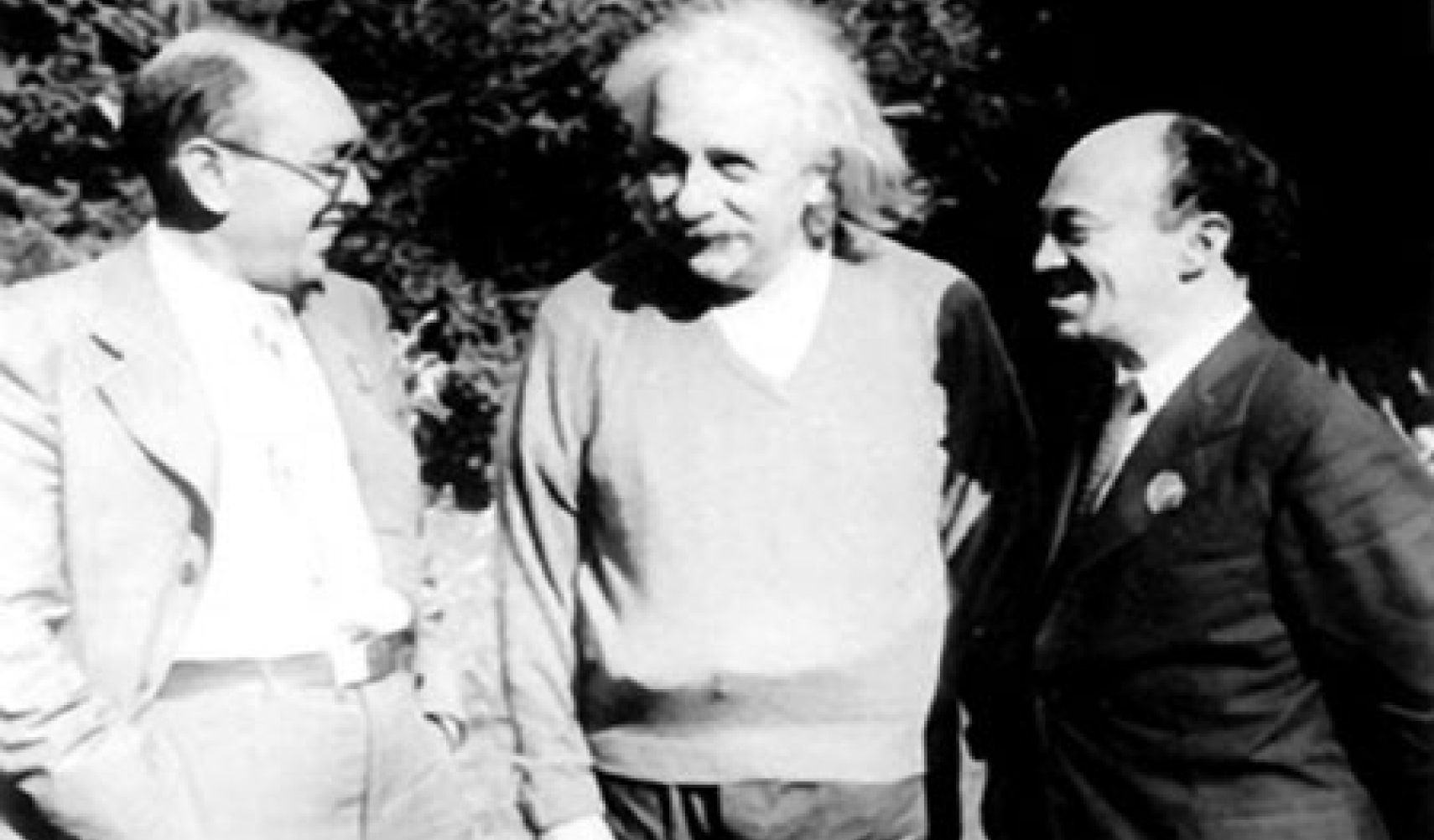
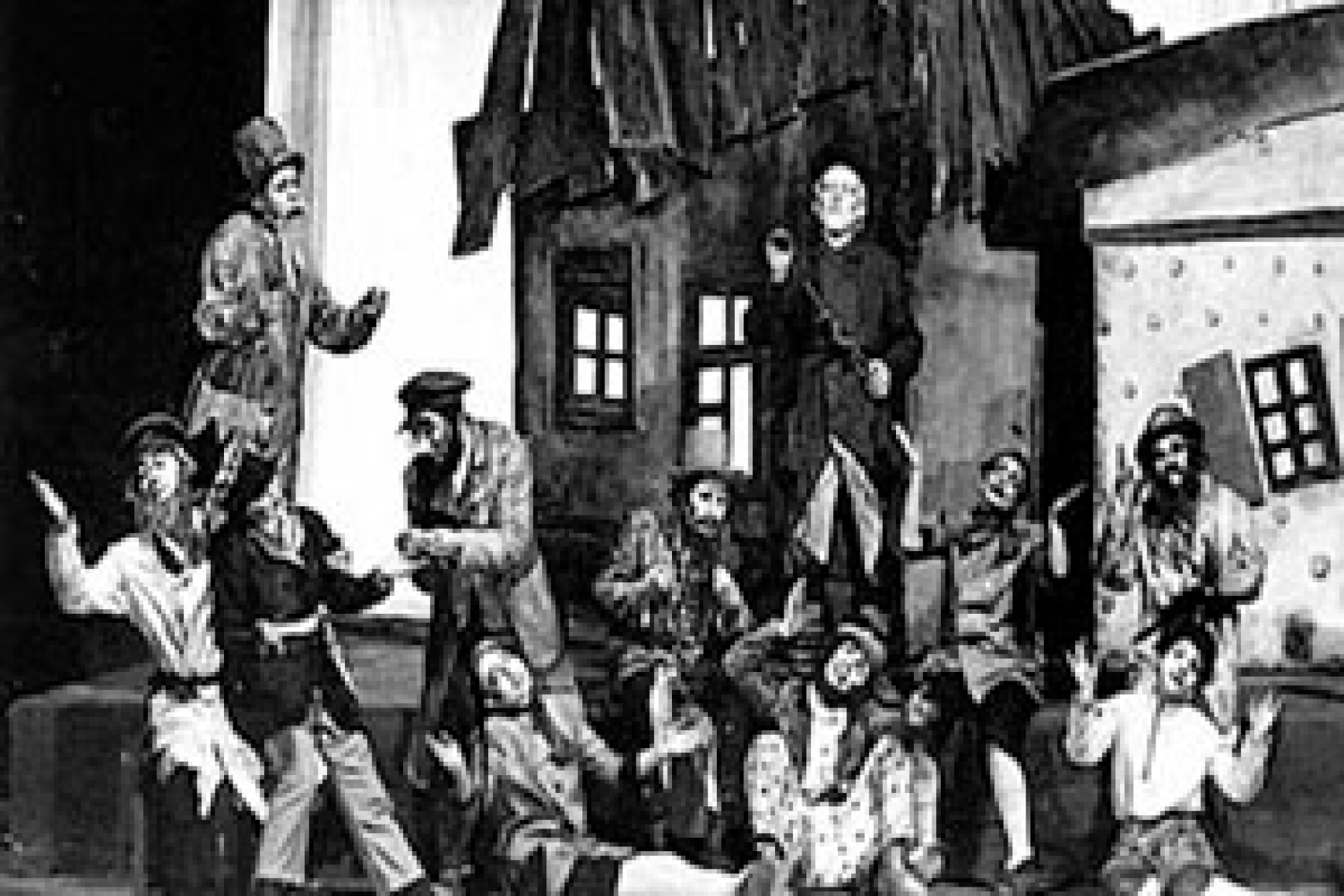
bn.org.ilA Moscow State Yiddish Theatre performance during the 1920s
Solomon Mikhoels, born Solomon Vovsi, was born in Dvinsk, Latvia (now called Daugavpils) in 1890. He joined the Jewish Chamber Theatre in Petrograd in 1919, which soon moved to Moscow and became The Moscow State Yiddish Theatre. Mikhoels quickly earned a reputation as a gifted comic performer. The company toured throughout Europe and The Soviet Union in the 1920s with Mikhoels playing many of the lead parts and branching out into musical and dramatic roles. He became the company’s artistic director in 1928.
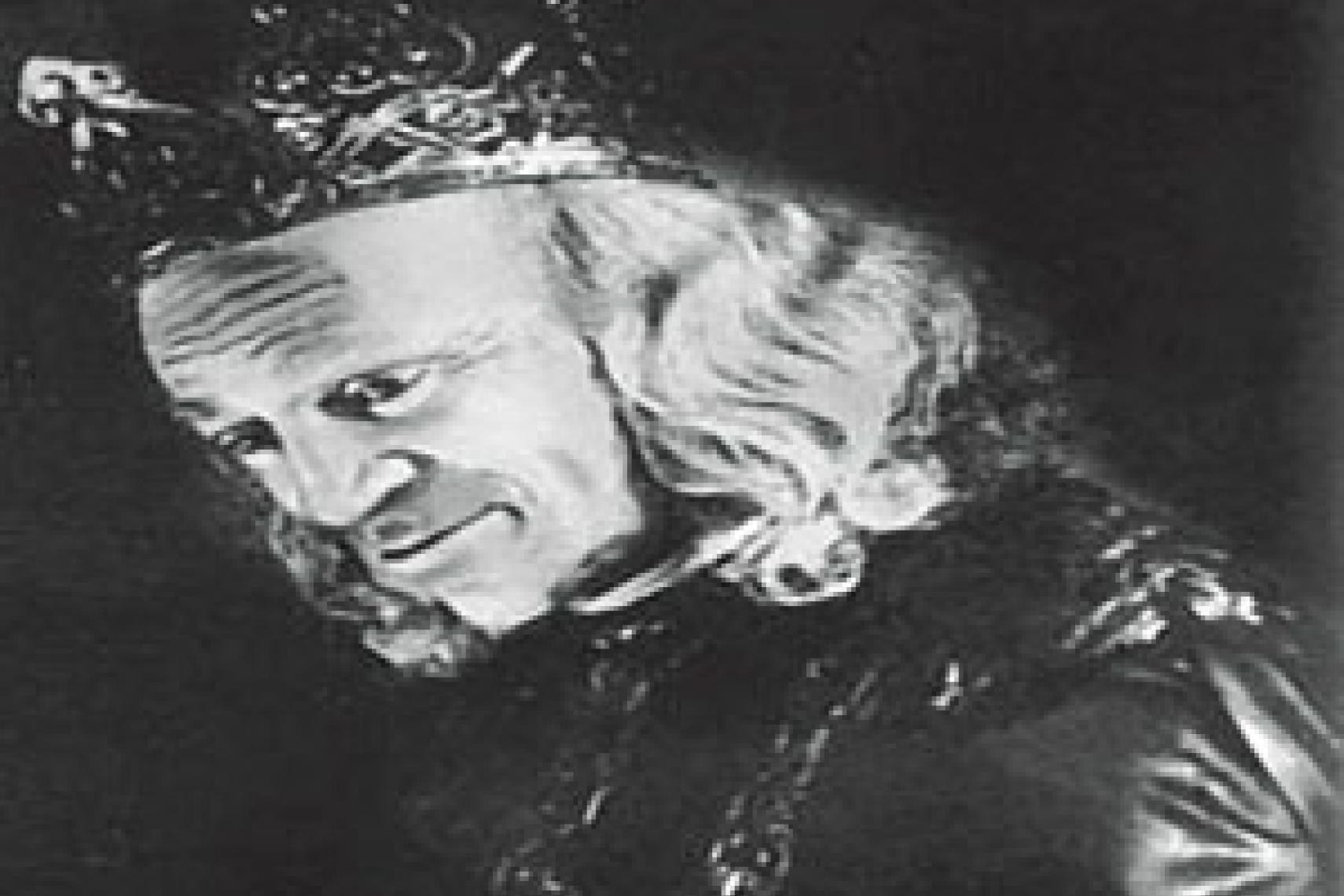
archieve.constatcontact.comMikhoels as King Lear
Mikhoels’ success continued in the 1930s. He earned high praise around the world for his portrayal of King Lear in 1935. In 1938 he played Tevye in a revival of Sholem Aleichem’s work that would later serve as the basis for Fiddler on the Roof. Towards the end of the decade Mikhoels began appearing in films, expanding his notoriety throughout the Soviet Union. In 1938 he was awarded The Order of Lenin and named People’s Artist Of The USSR.
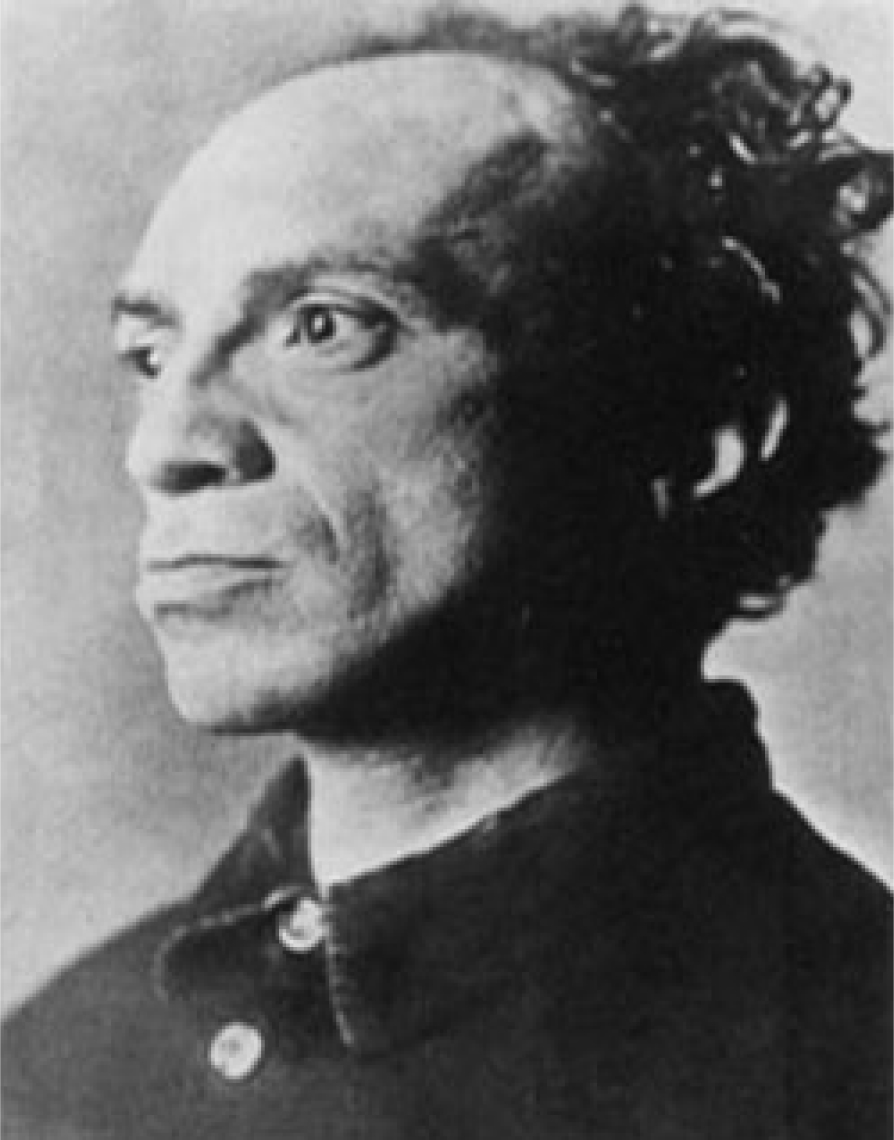
giuvivrussianfilm.blogspot.com
In 1941, Mikhoels was selected to act as leader of a Jewish group that would become the Jewish Antifascist Committee (JAC). In 1942 he became JAC’s first chairman. He had been a vocal leader in the Jewish community throughout his adult life and agreed to work with the government in what was officially a propaganda organization. For Soviet authorities, founding JAC produced the unintended consequence of strengthen Jewish identity in the a-religious USSR, thanks in part to Mikheols’ leadership. The committee wrote appeals to Jews around the world, asking for support for The Soviet Union’s war against Nazi Germany and denying any antisemitism existed in the USSR. They also conducted several fundraising campaigns. The most successful occurred in 1943, when Mikhoels lead a delegation to The US, Canada, Britain, Mexico, and Palestine, raising over 30 million dollars for The Soviet war effort. They were warmly received in every country, though the largest gathering was in New York. 50, 000 people attended a rally at The Polo Grounds, including Albert Einstein, Fiorello La Guardia, and Chaim Weitzman, in the largest pro Soviet demonstration on American soil.

eliatgordinlevitan.comMikhoels speaking at a JAC event
Mikhoels continued to lead the JAC after the war, moving the organization away from its original propagandist mission. The committee was viewed as dangerous for fostering a sense of national identity in the USSR apart from simply being “Soviet”. They tried to publish “The Black Book” about Nazi war crimes against The Jews and “The Red Book” about Jewish contributions to The Red Army. Both books contradicted the official Soviet history of the war, which claimed that all Soviet citizens suffered equally. Mikhoels also took it upon himself to write to Stalin about emerging antisemitism, though many suspected Stalin himself was behind the new discriminatory policies. During this time the JAC switched their fundraising efforts to help Jewish soldiers returning from the war. New government policy made it difficult for Jews to find work, while some were unable to get jobs due to injuries sustained in combat. They also assisted in locating displaced persons.
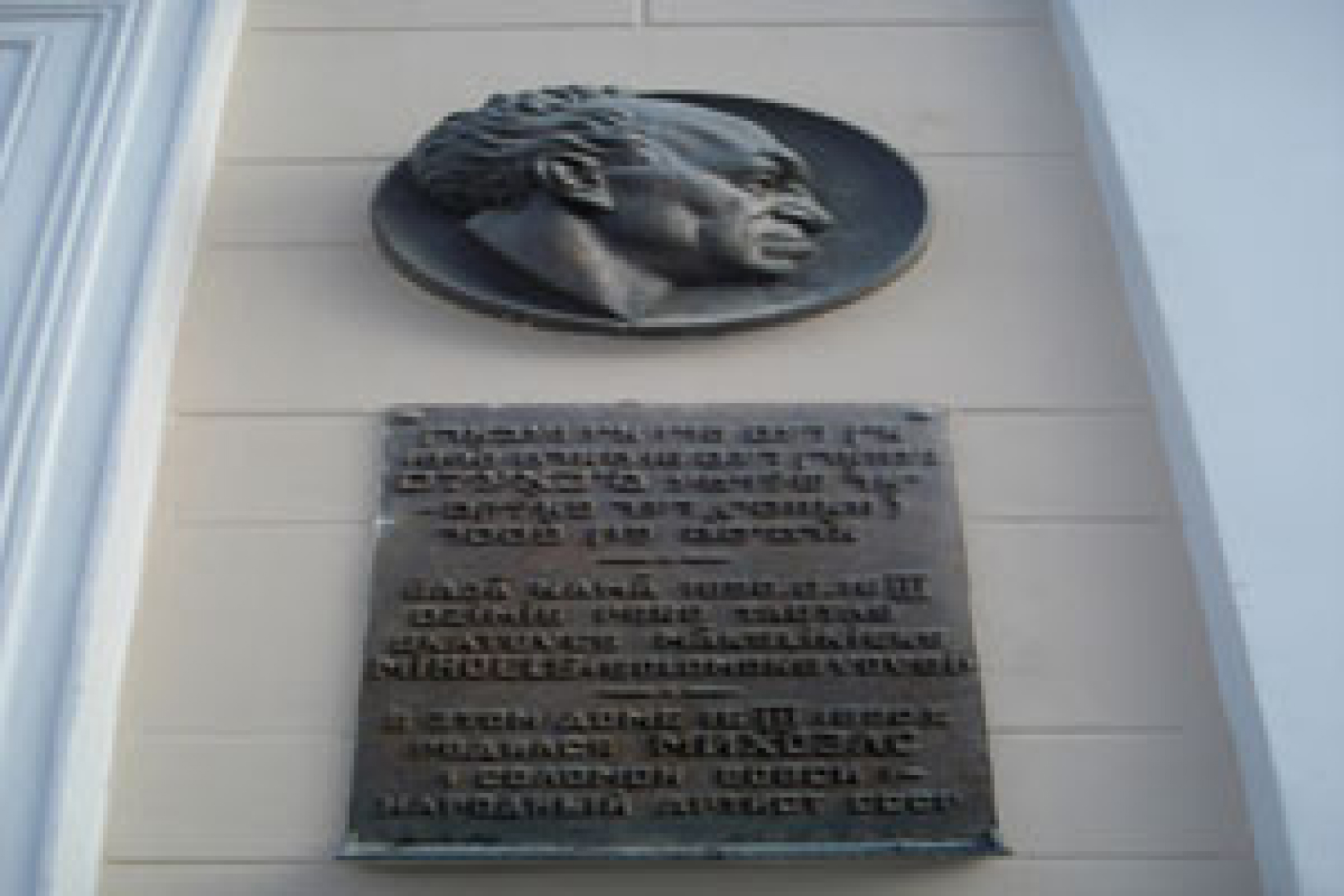
wikipedia.orgSolomon Mikohoels memorial in Daugavpils
The JAC’s postwar activities made Mikhoels a target for Soviet authorities. He was murdered on the night of January 12th 1948 in Minsk. Mikhoels death was staged as a hit and run accident, though there was a bullet hole in his head. In 1952 Mikhoels named was evoked in a media campaign associated with The Doctor’s Plot. His execution is considered to be the turning point in post war antisemitism, when it switched from veiled to overt persecution. After Stalin’s death, authorities confirmed that Mikhoels never conspired against the Soviet Union. Mikhoels was officially cleared of all wrongdoing in 1955. The Solomon Mikhoels Cultural Centre was founded in Moscow in 1989, marking the complete rehabilitation of his reputation.